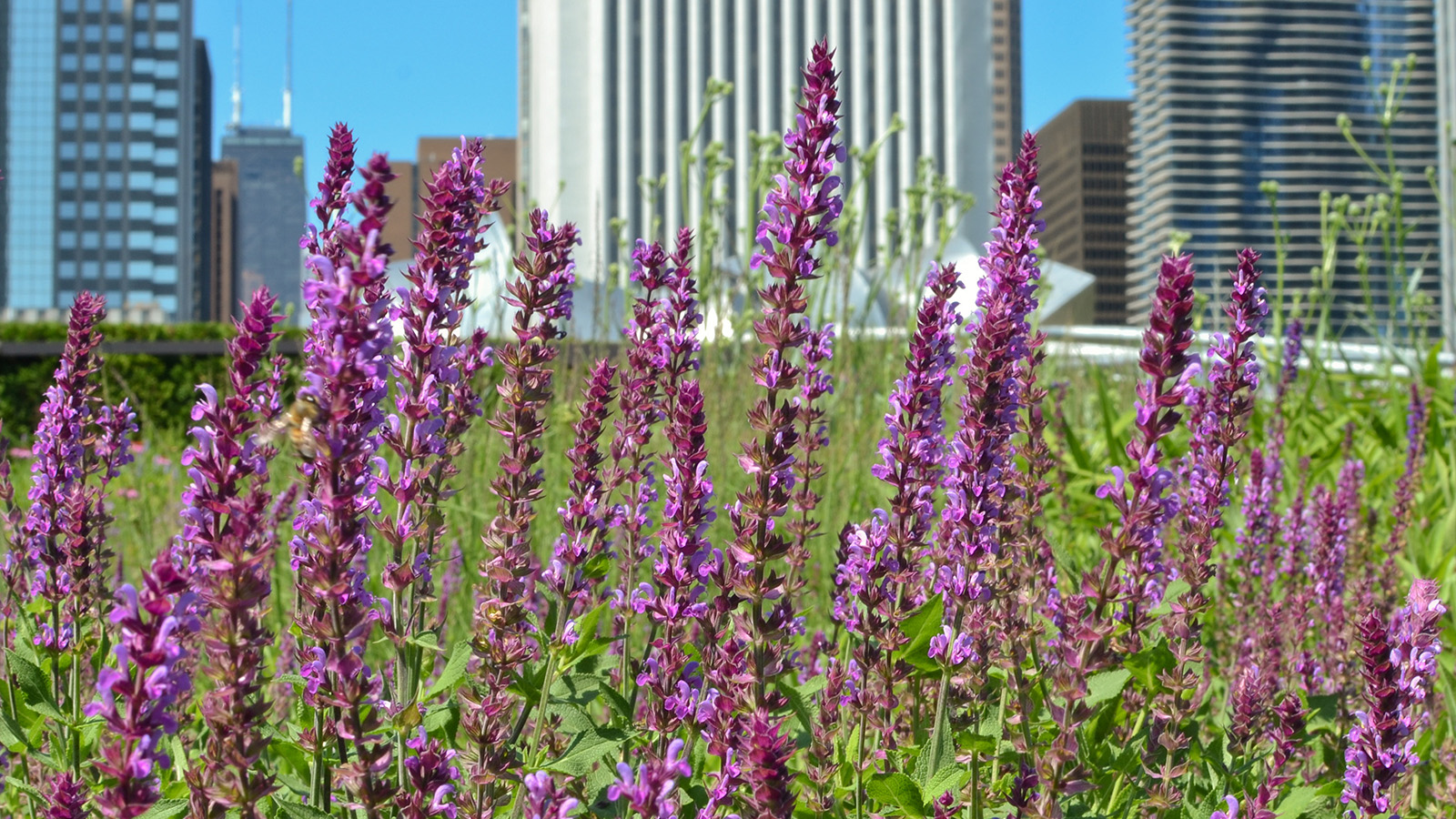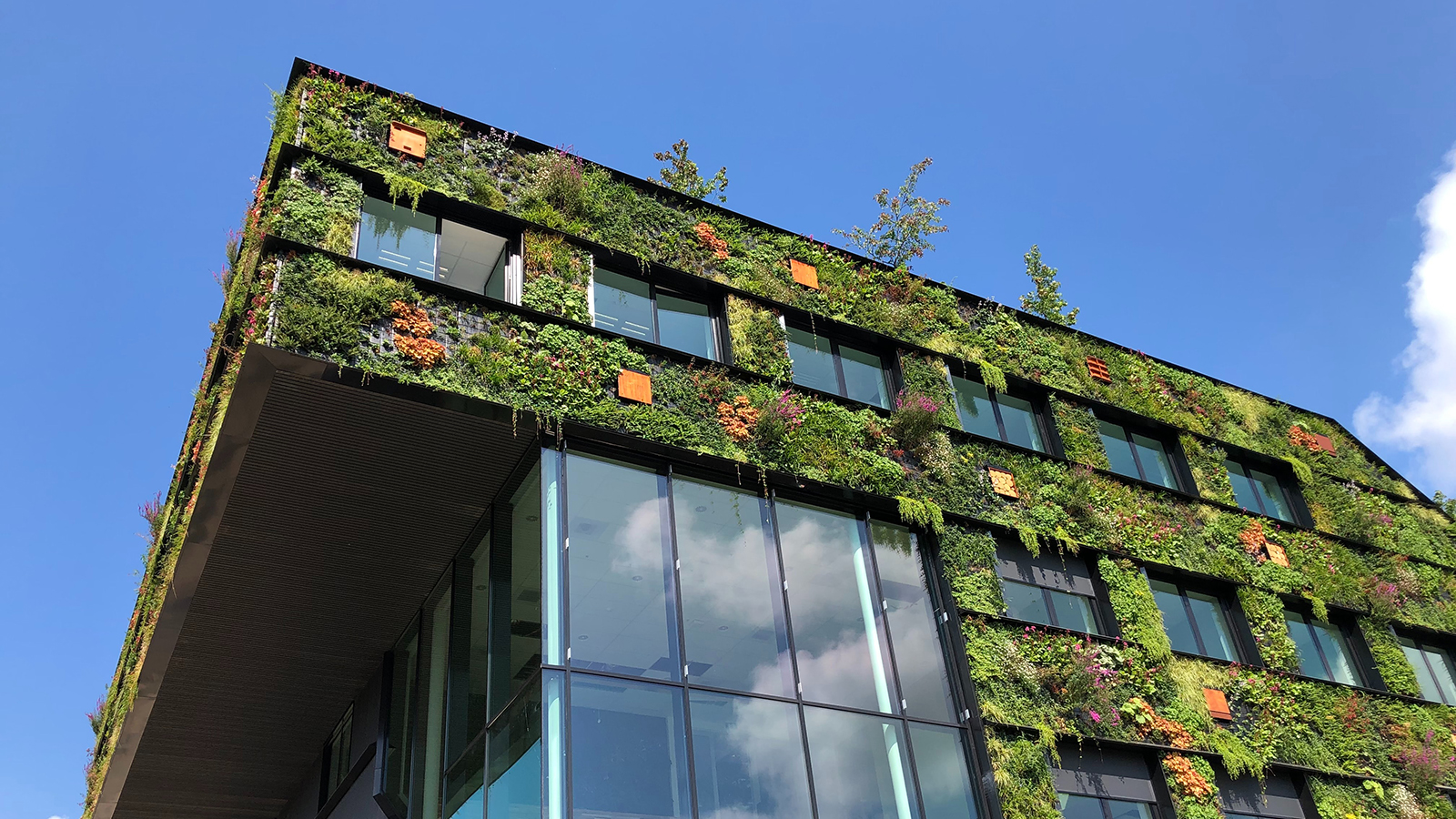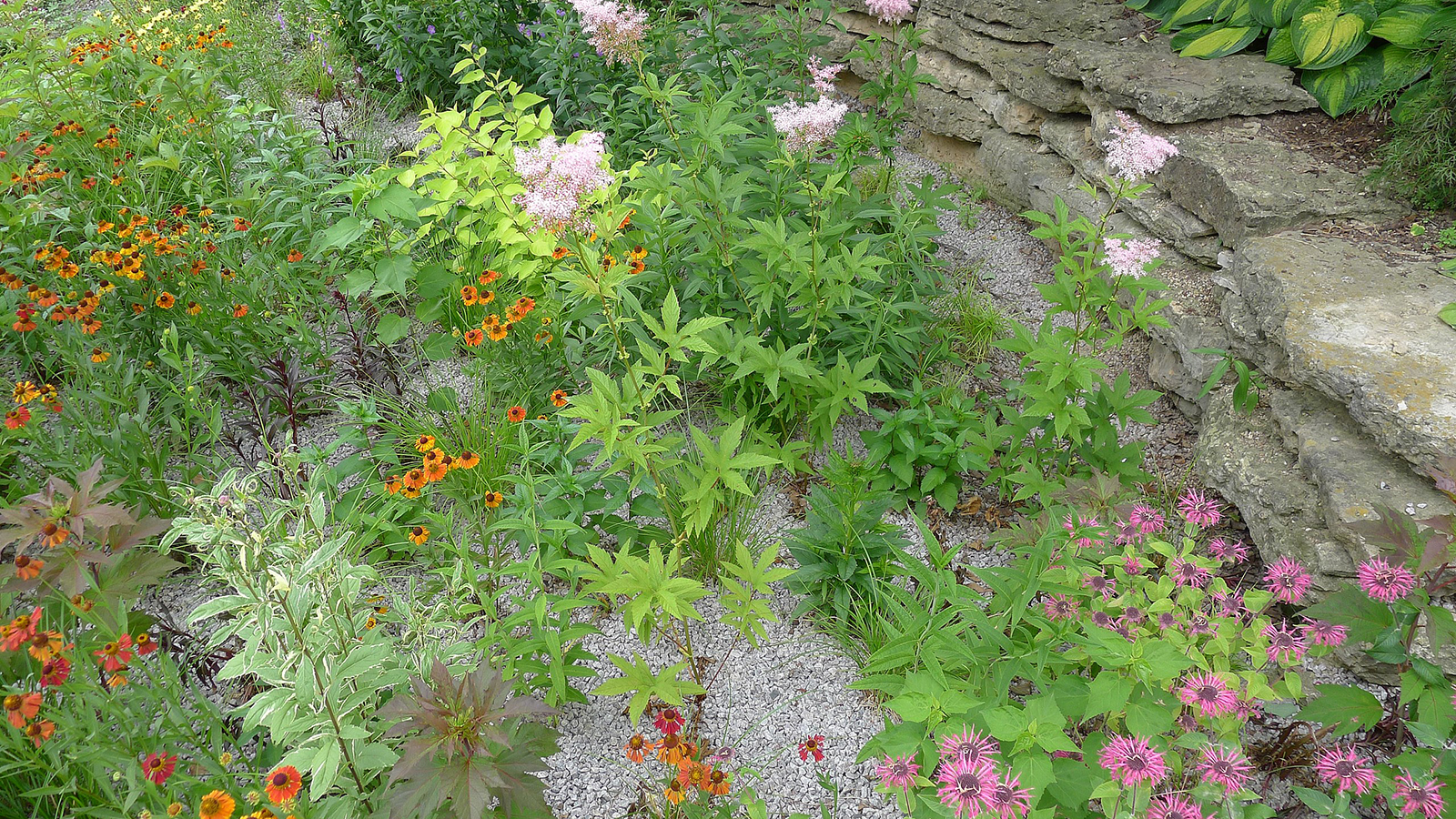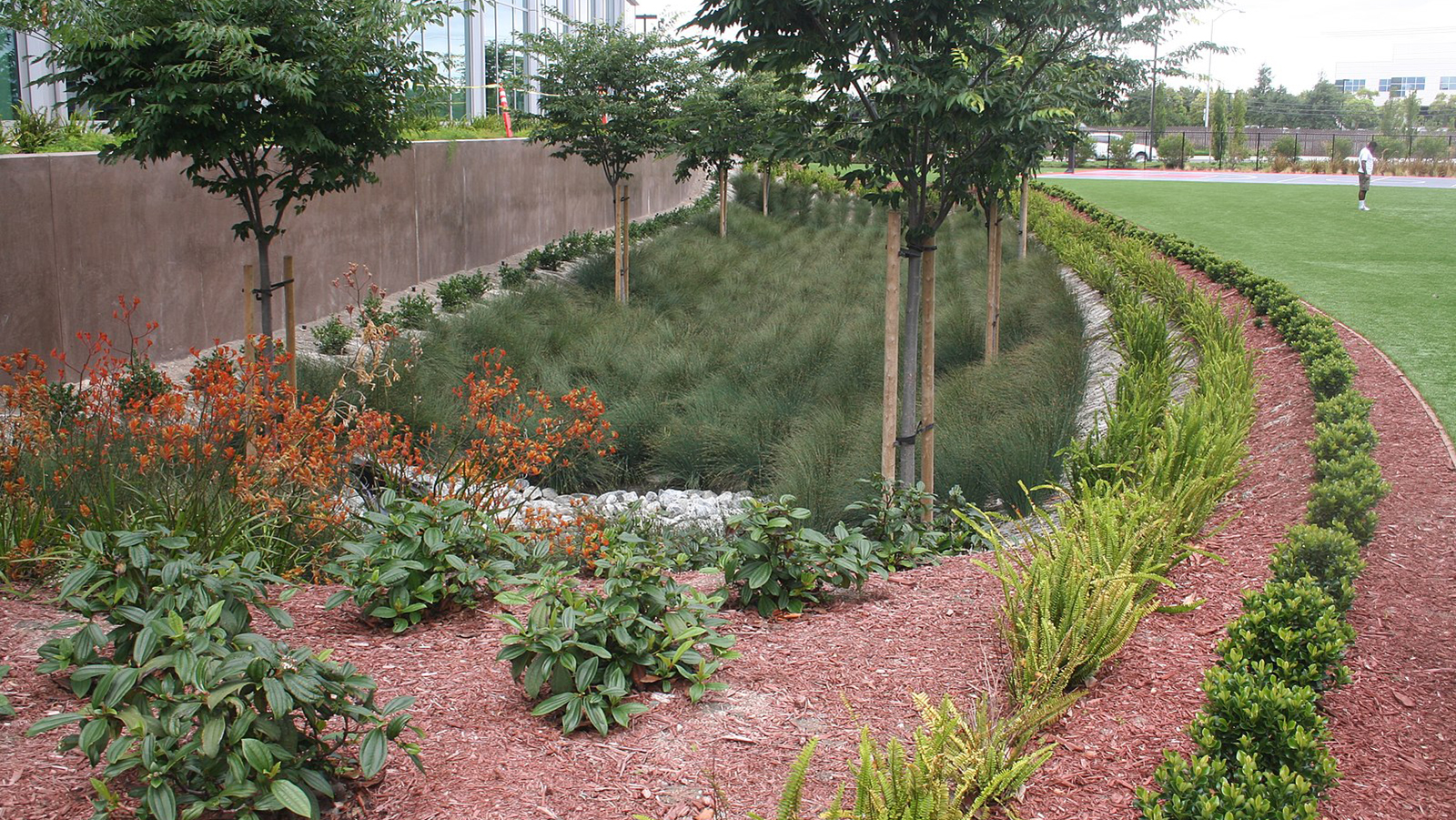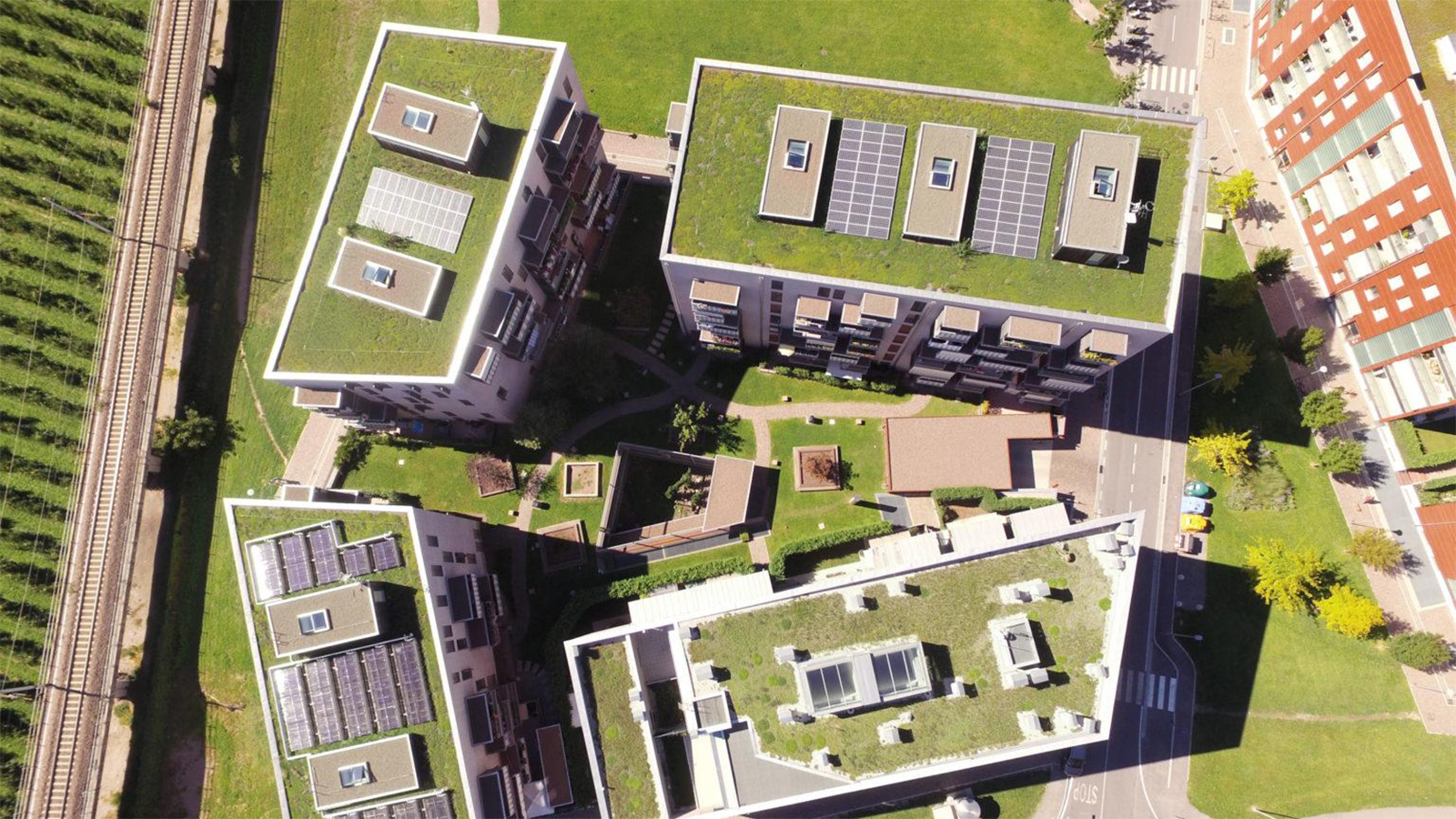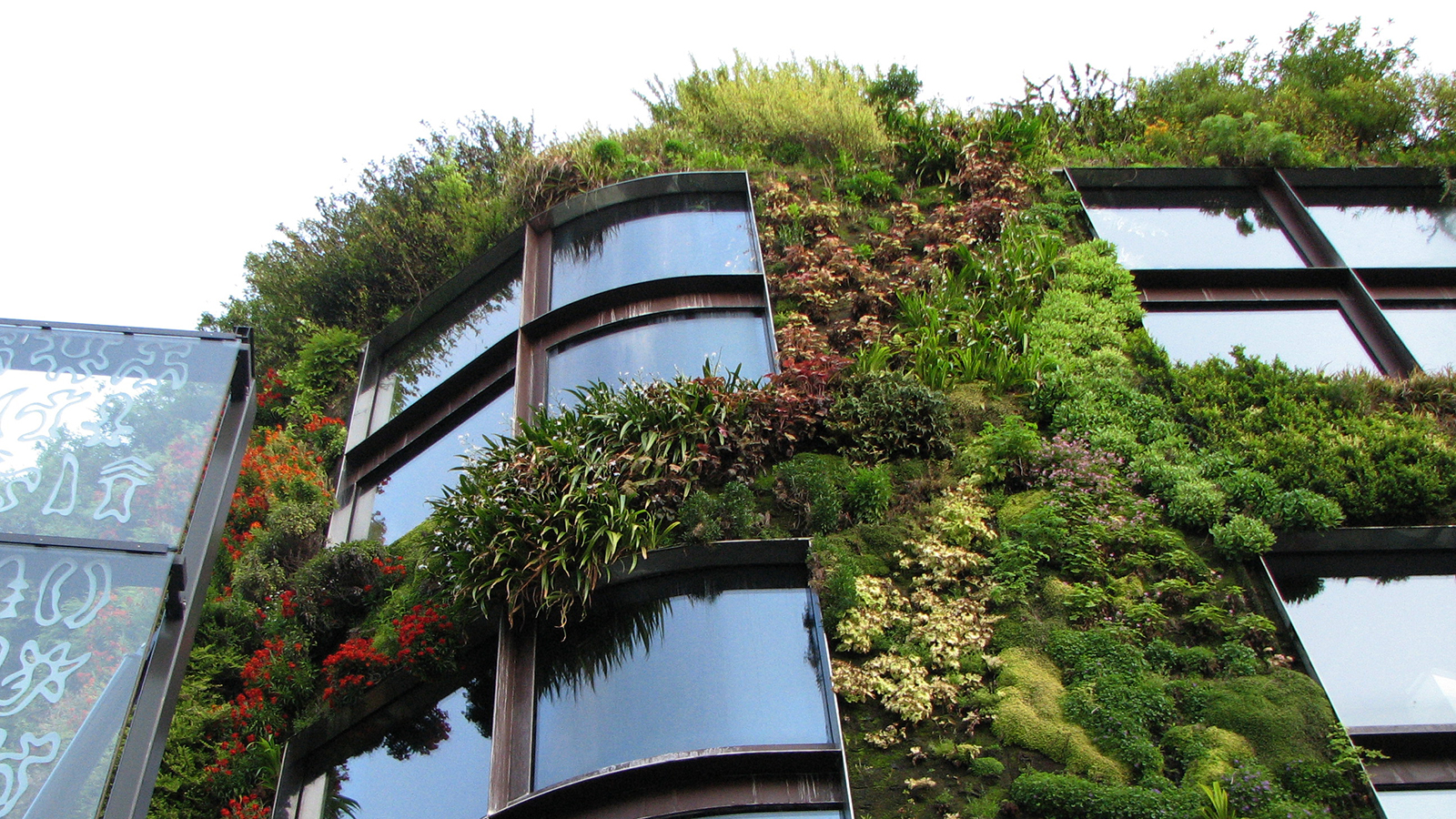
Five types of urban habitat for bees and butterflies
For bees, butterflies and other pollinators suffering from habitat loss, even the smallest patch of green can be a vital oasis, helping them to survive and thrive.
That’s especially true in our cities, where large swaths of open green space can be hard to find. But look closely and you’ll see that our cities are full of opportunities to create havens for pollinators, to create urban ecosystems that provide for human and non-human residents in equal measure.
These opportunities are all around us, and many of them involve the strategic use of “green infrastructure” – plantings and other nature-based solutions that are already being used in towns and cities all over the country to control polluted runoff, clear and cool the air, and make our cities more pleasant places to live.
Here are five types of urban habitat for bees, butterflies and other pollinators:
1. Rain Gardens
Rain gardens are an increasingly popular nature-based tool for absorbing surface water runoff from hard surfaces such as roads, driveways, sidewalks and parking lots. Also known as “bioretention facilities,” these are essentially just small gardens of native shrubs, perennials and flowers planted in a dip in the ground – and they can also double as a vibrant animal habitat.
Typically planted with wildflowers, rushes, ferns, shrubs and other plants that thrive in wetland-type environments, rain gardens can be engineered to provide shelter and sustenance for pollinators. Smart design choices – like ensuring a diverse mix of flowering native plants, including host plants known to be particularly attractive to specific species – can maximize the benefits to pollinators. They’re also something pretty much any of us can create in our own backyards, and there’s a wealth of resources available to help us do that.
2. Bioswales
A bioswale is a drainage channel designed to concentrate and carry stormwater runoff while filtering out pollutants and debris from the water. Typically planted with various kinds of vegetation, from lawn-type grass to larger plants, shrubs or trees, bioswales have proven to be extremely effective in cleaning up surface water and preventing contaminants from entering waterways. Like rain gardens, they can also double as a rich habitat for a range of wildlife, and if the vegetation is strategically selected to include a range of native flowering plants, they can provide food and shelter to bees, butterflies and other pollinators.
One key advantage of bioswales for pollinators is that they are long, linear strips of vegetation, and can therefore help to remedy the habitat fragmentation that has contributed to pollinator population decline, effectively providing corridors between fragmented patches of habitat and connecting up smaller patches of habitat with larger ones.
3. Green roofs
“Green roofs” or “living roofs” are among the most effective forms of green infrastructure for recreating pollinator habitats in our cities. As the name suggests, these are rooftops planted with vegetation –
wildflowers, native grasses and/or other pollinator-friendly plant species – whether in the form of gardens or larger-scale wildflower meadows.
Green roofs have been shown to enable an astonishing range of pollinator species to thrive, but the services they provide for bees – both honeybees and wild bees – are especially valuable. As well as providing much-needed food sources and rest stops for honeybees on their travels between their hives and the places they gather pollen, green roofs can be particularly beneficial to wild bees, which make their nests in plants and soil instead of traveling between hives. For these solitary creatures, vegetation-rich rooftops provide not just food sources and stop-off points, but also vital nesting habitat.
4. Living walls
Not all of the unused space in our cities that can be put to use to attract pollinators is horizontal. “Green walls” or “living walls” – also known as vertical greening systems, vertical gardens, or biowalls – are probably one of the least tried and tested forms of green infrastructure, but research suggests they have potential to provide pollinators with important sources of forage and shelter – and to do so without conflicting with human demands for space in our cities.
The space on a building that could be used for green walls could be as much as double that of the ground space that that building occupies, meaning our existing urban architecture could potentially be a huge untapped resource for creating pollinator habitat. There are two basic kinds of green walls: “green facades,” which use hanging plants or climbing plants rooted in planters or in the ground, and “living walls,” where plants are rooted in the wall itself, kind of like the vertical equivalent of living roofs. This means they can host a much greater range of plants and flowers, making them especially promising for pollinator conservation.
Living walls are an emerging technology that still has plenty of hurdles to overcome before it can be taken to scale, but the list of examples to draw from is longer than you might think. Three thousand square feet of living wall on Los Angeles’ Santa Monica Boulevard, known as the “Living Billboard,” has proved attractive to pollinators like hummingbirds. UK retail giant Marks & Spencer has been installing living walls on its stores for years. Almost 3,000 square feet of wall at London’s famous Wimbledon tennis courts are home to more than 14,000 plants, and the spectacular facades of the Athenaeum Hotel and Residences and The Rubens at the Palace in London provide habitat to butterflies, bees, birds and other wildlife, as do similar structures at Liberty Park at the World Trade Center in New York, the Musée du Quai Branly in Paris and a growing list of others all over the world.
5. Native “parkways”
Whatever you want to call them – parkways, curb strips, tree lawns or even “devil strips” – the narrow strips of land between the sidewalk and the curb are pollinator habitat waiting to happen. Often these areas are technically city property but the responsibility of individual homeowners to maintain, and this provides an opportunity for residents and city authorities to work together to create native habitats that can provide crucial sources of nourishment and shelter for pollinator species.
Some cities already offer programs to provide native plants and other resources for homeowners looking to convert their parkways to native habitat. The expansion of these kinds of schemes nationwide could give a major boost to citizen involvement in creating safe spaces for the bees, butterflies and other creatures that exist as an essential, yet all too often neglected component of our natural ecosystems.
These micro-habitats aren’t just good news for pollinators. They can also be incredibly beautiful, enhancing our communities and making our cities more pleasant and colorful places to live and work. And the even better news is that there’s more funding available today than ever before to help build them. In the next article in our pollinators series, we will take a look at some of those funding opportunities.
Topics
Authors
Steve Blackledge
Senior Director, Conservation America Campaign, Environment America Research & Policy Center
Started on staff: 1991 B.A., Wartburg College Steve directs Environment America’s efforts to protect our public lands and waters and the species that depend on them. He led our successful campaign to win full and permanent funding for our nation’s best conservation and recreation program, the Land and Water Conservation Fund. He previously oversaw U.S. PIRG’s public health campaigns. Steve lives in Sacramento, California, with his family, where he enjoys biking and exploring Northern California.
James Horrox
Policy Analyst, Frontier Group
James Horrox is a policy analyst at Frontier Group, based in Los Angeles. He holds a BA and PhD in politics and has taught at Manchester University, the University of Salford and the Open University in his native UK. He has worked as a freelance academic editor for more than a decade, and before joining Frontier Group in 2019 he spent two years as a prospect researcher in the Public Interest Network's LA office. His writing has been published in various media outlets, books, journals and reference works.
Marcia Eldridge
President, Environmental Action Research & Policy Center
Find Out More
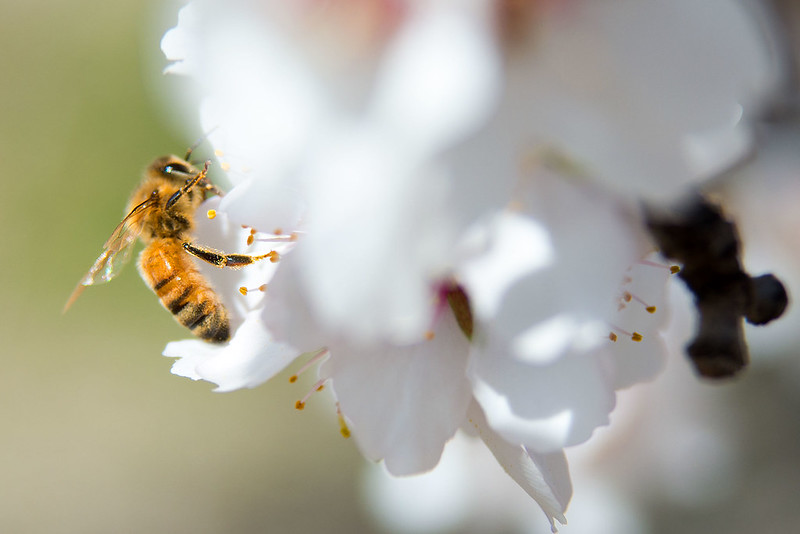
Why monoculture farming practices harm bees

A look back at what our unique network accomplished in 2023
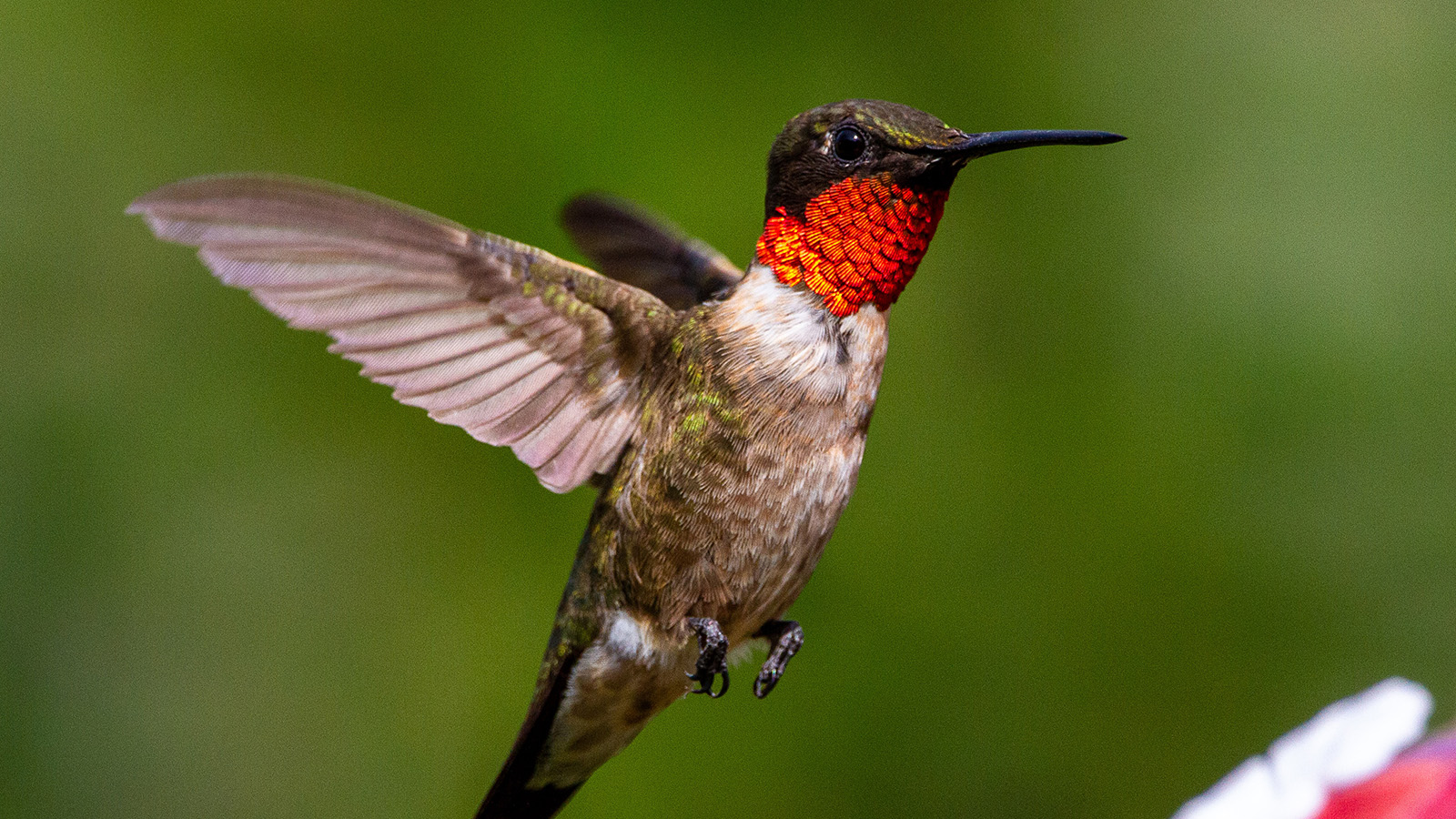
Jewels of the sky
